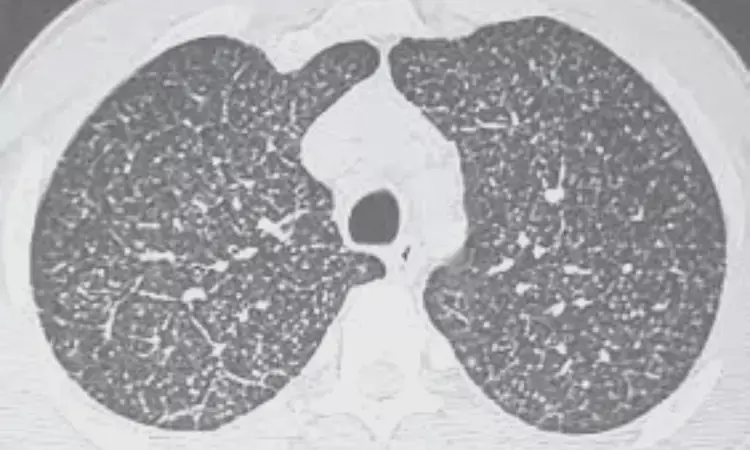- Home
- Medical news & Guidelines
- Anesthesiology
- Cardiology and CTVS
- Critical Care
- Dentistry
- Dermatology
- Diabetes and Endocrinology
- ENT
- Gastroenterology
- Medicine
- Nephrology
- Neurology
- Obstretics-Gynaecology
- Oncology
- Ophthalmology
- Orthopaedics
- Pediatrics-Neonatology
- Psychiatry
- Pulmonology
- Radiology
- Surgery
- Urology
- Laboratory Medicine
- Diet
- Nursing
- Paramedical
- Physiotherapy
- Health news
- Fact Check
- Bone Health Fact Check
- Brain Health Fact Check
- Cancer Related Fact Check
- Child Care Fact Check
- Dental and oral health fact check
- Diabetes and metabolic health fact check
- Diet and Nutrition Fact Check
- Eye and ENT Care Fact Check
- Fitness fact check
- Gut health fact check
- Heart health fact check
- Kidney health fact check
- Medical education fact check
- Men's health fact check
- Respiratory fact check
- Skin and hair care fact check
- Vaccine and Immunization fact check
- Women's health fact check
- AYUSH
- State News
- Andaman and Nicobar Islands
- Andhra Pradesh
- Arunachal Pradesh
- Assam
- Bihar
- Chandigarh
- Chattisgarh
- Dadra and Nagar Haveli
- Daman and Diu
- Delhi
- Goa
- Gujarat
- Haryana
- Himachal Pradesh
- Jammu & Kashmir
- Jharkhand
- Karnataka
- Kerala
- Ladakh
- Lakshadweep
- Madhya Pradesh
- Maharashtra
- Manipur
- Meghalaya
- Mizoram
- Nagaland
- Odisha
- Puducherry
- Punjab
- Rajasthan
- Sikkim
- Tamil Nadu
- Telangana
- Tripura
- Uttar Pradesh
- Uttrakhand
- West Bengal
- Medical Education
- Industry
Can CT effectively diagnose interstitial lung disease? Study sheds light

Belgium: More research needs to be done to effectively evaluate lung abnormalities that could indicate interstitial lung disease, according to a study published in Radiology, journal of the Radiological Society of North America (RSNA).
"Further studies are needed to refine further and verify the concept of interstitial lung abnormalities and their link to the genesis and advancement of interstitial lung disease," Stijn E. Verleden from Katholieke Universiteit Leuven (KU Leuven) in Belgium and colleagues wrote.
The team noted interstitial lung abnormalities (ILAs) on lung CT scans can indicate early interstitial lung disease; however, there needs to be more clarity on the condition's histopathologic correlates to imaging results. Verleden and the research team aimed to determine the correlation between histopathologic and radiologic findings in CT-defined ILAs in human lung explants to fill this knowledge gap.
For this purpose, the researchers prospectively collected (from 2010 to 2021) explanted lungs or lobes from people with radiologically documented ILAs. These samples were air-inflated, frozen, and scanned with CT (computed tomography) and micro-CT. The lungs were subsequently cut and sampled with core biopsies. At least five samples from each lung underwent micro-CT and subsequent histopathologic assessment. Based on area-specific radiologic scoring, the authors assessed the association between radiologic and histopathologic findings.
The study included eight lung explants from six donors (median age at explantation, 71 years; four men); new donor lungs, n = 4; pre-emptive lobectomy for oncologic indications, n = 2.
Following were the study's key findings:
- Ex vivo CT showed ground-glass opacification, reticulation, and bronchiectasis.
- Micro-CT and histopathologic examination showed that lung abnormalities were frequently paraseptal and linked with fibrosis and lymphocytic inflammation.
- The histopathologic results showed varying fibrosis degrees in areas that appeared normal on CT scans.
- Regions of reticulation on CT scans generally had more significant fibrosis at histopathologic analysis.
- Vasculopathy and bronchiectasis were also often present at the histopathologic examination of lungs with ILAs.
- Fully developed fibroblastic foci were rarely observed.
The study showed direct histologic correlates of CT-defined interstitial lung abnormalities.
"The findings of the study highlight how it is difficult to effectively characterize interstitial lung abnormalities with currently used imaging techniques," Dr Jean Jeudy from the University of Maryland in Baltimore wrote in an accompanying commentary. He cautioned that the more we learn, the less we know is the case with interstitial lung abnormalities.
He noted that patients with advanced fibrosis features are at the highest risk of adverse outcomes and progression. However, even mild disease patients may have underlying fibrosis that could be missed with computed tomography. "Yet further imaging research will likely improve the diagnosis of early interstitial lung disease," he explained.
He concluded that "newer advances in scanner technology and artificial intelligence will improve imaging accuracy. With improved imaging biomarkers, the definitive goal will be to recognize which patients will develop progressive disease and why."
Reference:
Verleden SE, Vanstapel A, Jacob J, Goos T, Hendriks J, Ceulemans LJ, Van Raemdonck DE, De Sadeleer L, Vos R, Kwakkel-van Erp JM, Neyrinck AP, Verleden GM, Boone MN, Janssens W, Wauters E, Weynand B, Jonigk DD, Verschakelen J, Wuyts WA. Radiologic and Histologic Correlates of Early Interstitial Lung Changes in Explanted Lungs. Radiology. 2022 Dec 20:221145. doi: 10.1148/radiol.221145. Epub ahead of print. PMID: 36537894.
Dr Kamal Kant Kohli-MBBS, DTCD- a chest specialist with more than 30 years of practice and a flair for writing clinical articles, Dr Kamal Kant Kohli joined Medical Dialogues as a Chief Editor of Medical News. Besides writing articles, as an editor, he proofreads and verifies all the medical content published on Medical Dialogues including those coming from journals, studies,medical conferences,guidelines etc. Email: drkohli@medicaldialogues.in. Contact no. 011-43720751


